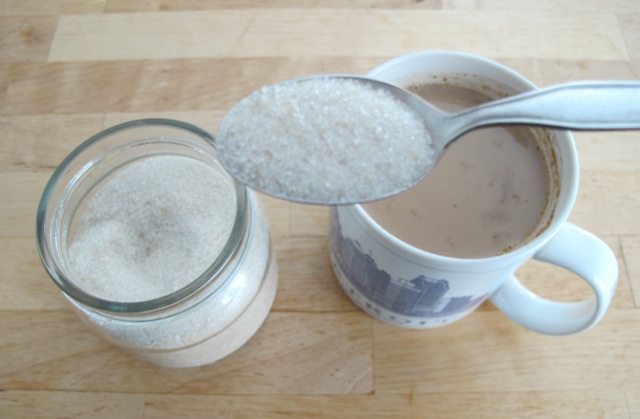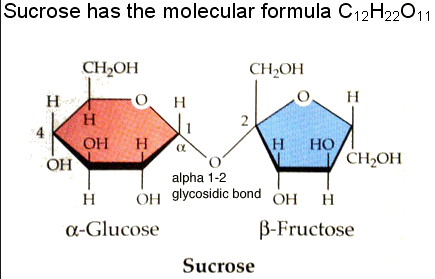
Bottom line: glucose and fructose are two very distinct molecules structurally that are metabolized entirely differently in our bodies.
Here’s why. From the time we became humans about 2 million years ago until 10,000 years ago, when we started transitioning from being hunter gatherers to food cultivators, fruits – all of which contain fructose – were in season and available to eat for very short periods of time. Yes, we derived energy from that fruit right after eating it from glucose and other nutrients, but a good deal of that energy, in the form of fructose, was converted to fat for use by our bodies during “famine” periods when those fruits were not in season.
Dr. Lewis Cantley graduated from West Virginia Wesleyan College in chemistry and took his PhD in biophysical chemistry at Cornell University where he worked on enzyme kinetics. He did his postdoctoral studies at Harvard University where he stayed as an assistant professor until he moved to Tufts University where he discovered phosphoinositide-3-kinase, the enzyme critical to the control of growth that has dominated his research ever since. He returned to Harvard as a Professor of Cell Biology and later as a member of the new Department of Systems Biology and is now Director of the new Cancer Center at Weill Cornell Medical College and New York-Presbyterian Hospital.
 . Lewis Cantley
. Lewis Cantley
I’d like to ask you one last question, on fructose. You’ve written recently on the very topical issue of whether fructose is a particularly important cause of metabolic disease [4] and, as we now know, with possible very strong links to cancer. As I understand it, sucrose – and even other carbohydrates – in excess can be metabolized to fructose. So if we’re just eating too much carbohydrate generally, does it really matter whether it’s fructose or any other kind?
It turns out that it does matter. Quite honestly, four or five years ago I was in your camp of assuming, you know – fructose, glucose, they have exactly the same number of calories per gram, they can be interconverted instantly inside most cells, so what does it matter? The answer is, it’s really important – and quite striking – because the liver differentially metabolizes fructose and glucose. This specialization is pretty much unique to the liver; in any other cell, the fructose and glucose are pretty much interchanged quite rapidly. But liver does not have hexokinase, so it cannot phosphorylate fructose at the six position. This is in contrast to glucose, which can be phosphorylated at the six position in the liver by glucokinase to make glucose-6-phosphate, which is then converted to fructose-6-phosphate. And that is then phosphorylated at the one position by phosphofructokinase (PFK), which is – and here’s the key point – the ultimate gatekeeper for entering glycolysis. In contrast, fructose that enters the liver is phosphorylated at the one position by fructokinase (also called ketohexokinase) to make fructose-1-phosphate rather than fructose-6-phosphate. The liver is almost unique in regard to the ability to differentially metabolize glucose and fructose.
And that matters because…?
That matters because once it’s phosphorylated at the one position, fructose can be a substrate for aldolase, and shoot down the glycolytic pathway, bypassing the gatekeeper PFK, which is the control step for going into glycolysis. In most tissues, if the cell finds itself with plenty of ATP and plenty of citrate (the building blocks for making fatty acids), it will stop all flux through glycolysis because ATP and citrate inhibit PFK – a classic example of a metabolic negative feedback control. So the glucose that enters the cell can still get phosphorylated but it doesn’t go down glycolysis and doesn’t get converted to fat but rather gets stored as glycogen or exits the cell.
But in the liver, fructose bypasses that whole machinery, because it doesn’t need PFK; it gets phosphorylated at the one position directly, without phosphorylation of the six position first and, as a consequence, now becomes a substrate for aldolase, and it produces even higher levels of ATP and citrate that go on to make fatty acids. No matter how much you’ve eaten, you will still make more fat if you eat fructose.
There are two other things about fructose that make it different from glucose. One is that all the fructose you eat is cleared on its first pass through the liver. In other words, the liver scarfs up all the fructose and immediately converts it to fat, while glucose stays in the bloodstream for some period of time. That’s why we call starches hyperglycemic molecules; they keep glucose levels in your bloodstream high for a long time. That is good for the brain – the brain loves to eat glucose. It’s good for the muscle. But fructose doesn’t actually supply any energy to your brain at all, it doesn’t supply any energy to your muscle; it only gets stored as fat. That’s really quite remarkable, if you think about it. You eat sucrose – one molecule of glucose and one molecule of fructose – that glucose is being used by your muscle and your brain – your brain loves getting that glucose – but the fructose is all just getting stored as fat.
But does it also mean that you get hungrier – you want more sugar if you’re using fructose rather than glucose?
Exactly. You would have to eat exactly twice as much sucrose as starch to get the same amount of energy supplied to your muscle and brain. The brain realizes that, it keeps relaying a feedback so that the more sugar you eat, the more it wants you to eat. Hence the addiction to sweetness. That’s the dangerous thing about this molecule.
You might ask – well why did we evolve such a complicated system? Why does only the liver feed fructose straight into fat? I think it’s quite clear why this happens. We have a symbiotic relationship with plants. Plants want to spread their seeds around, so they surround them with fructose. High-fructose material surrounding the seeds gets us and other animals to eat them and this craving of fructose makes us eat them a lot and we end up carrying their seeds around and spreading them. But at the same time, it gives us an advantage because those fruits ripen just at the end of the growing season, which generally means, in almost all environments, that you’re not going to have much to eat over the next few months. So the best way to survive is to convert everything you eat at that time into fat. That is the long-term storage mechanism that allows you to survive until the next growing season. That’s why fructose was spectacular for us 10,000 years ago, getting us through these famines that we faced every year. But today we don’t have famines and so we just get fat.
Does this put a whole new gloss on Eve and that apple?
You’d probably have to eat about a bushel of apples to get the same amount of fructose as in a 40 oz Coke, which we’re trying to ban here in New York City unsuccessfully.
And here’s an additional comment. The way we’ve attempted to avoid this problem is by using artificial sweeteners. The problem with those is that a disconnect ultimately develops between the amount of sweetness the brain tastes and how much glucose ends up coming to the brain.
So the brain figures you have to eat more and more and more sweetness in order to get any calories out of it. The consequence of people eating lots of sweeteners, no matter what they are – whether they’re natural or unnatural – is that it increases the addiction for the sweetness. As a consequence, at the end of the day, your brain says, ‘OK, at some point I need some glucose here’. And then you eat an entire cake, because nobody can hold out in the end. The only way really to prevent this problem – to break the addiction – is to go completely cold turkey and go off all sweeteners – artificial as well as fructose. Eventually the brain resets itself and you don’t crave it as much.

 February 7th, 2014
February 7th, 2014  brucetretter
brucetretter 
 Posted in
Posted in  Tags:
Tags: